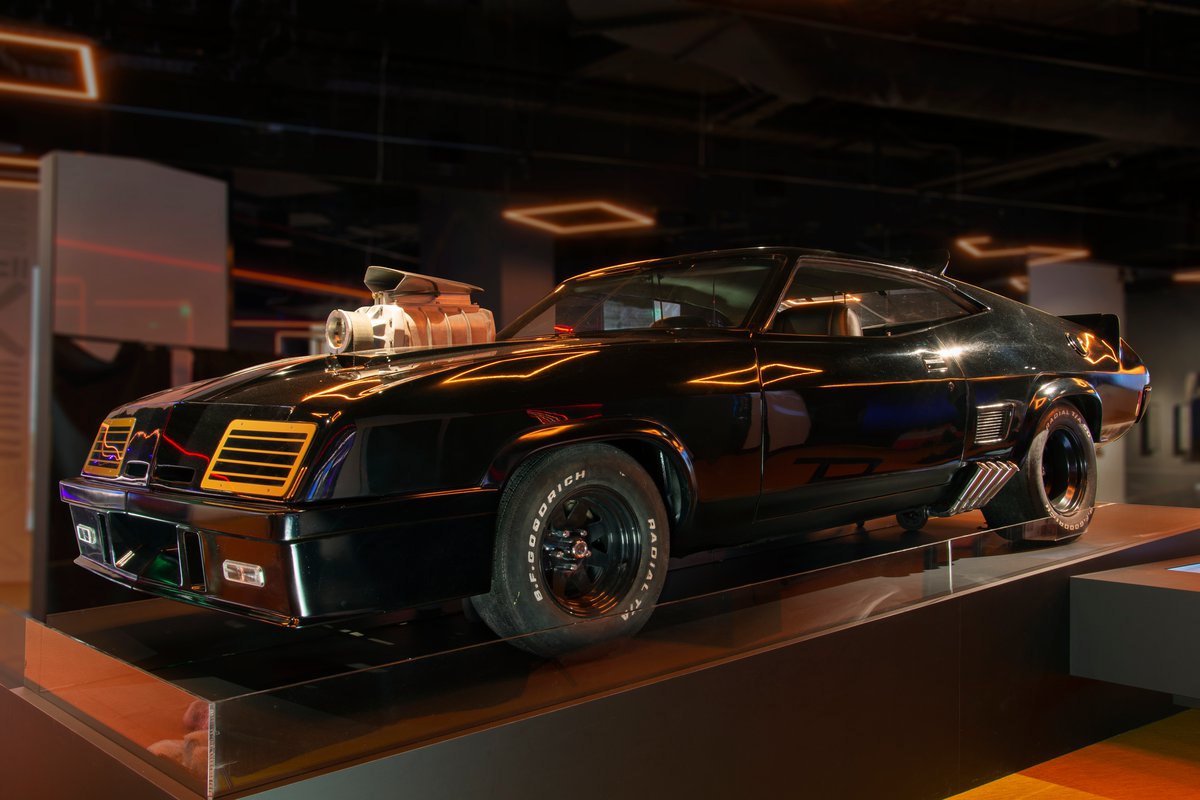George Miller’s Mad Max revolutionised movies when it tore through cinemas in 1979. Max Rockatansky’s journey dispensing justice across the wasteland in his V8 Interceptor became a cult classic and catapulted Australian cinema onto the world stage.
Bursting with stunning practical effects, explosive set pieces and iconic costumes, the original Mad Max trilogy (1979–85) cemented its place in pop culture. Thirty years later it roared back onto screens with a ‘reimagining’ featuring instantly classic new characters like Imperator Furiosa (Charlize Theron) and the War Boys.
Mad Max’s super-powered vehicles, legendary characters and post-apocalyptic setting influenced everything from movies, manga and music videos to fashion, videogames and art, spawning enough parodies, homages and clones to fill a Thunderdome.
Curator Notes
It would be hard to keep a continent as large as Australia connected without cars. From the suburbs to the Outback, cars have become essential to Australian identity, especially in cinema, where they represent independence, freedom and status. They also often symbolise Australian ideals of masculinity. Under the armoured death machines and shiny chrome, George Miller’s Mad Max series interrogates the undercurrent of toxic machismo and violence tied to Australia’s isolation and obsession with cars. Bush Mechanics similarly embodies Australian ideals of masculinity but reinterprets car culture to represent the ingenuity, adaptability and innovation of Aboriginal Central Australia.
Related articles
Related works
Related events
Content notification
Our collection comprises over 40,000 moving image works, acquired and catalogued between the 1940s and early 2000s. As a result, some items may reflect outdated, offensive and possibly harmful views and opinions. ACMI is working to identify and redress such usages.
Learn more about our collection and our collection policy here. If you come across harmful content on our website that you would like to report, let us know.
How to watch
Collection
Not in ACMI's collection
On display until
16 February 2031
ACMI: Gallery 1
Credits
Collection metadata
ACMI Identifier
P183279
Curatorial section
The Story of the Moving Image → Moving Australia → MA-03. Car Culture
Measurements
1369 x 950 x 4808mm
Object Types
Exhibition Prop
Film and television props and memorabilia
Materials
fibreglass, steel, aluminium, plastic, glass, epoxy resin, automotive paint, vinyl, leather, nylon carpet
